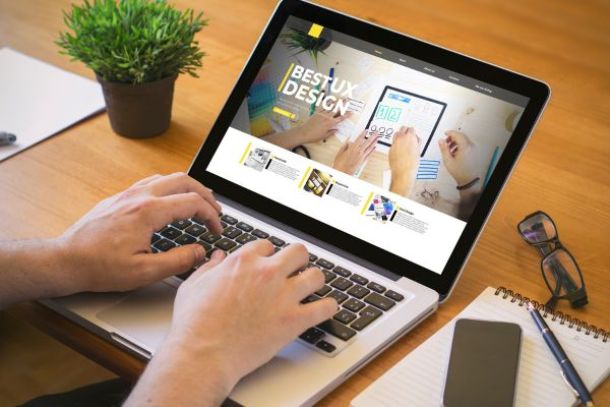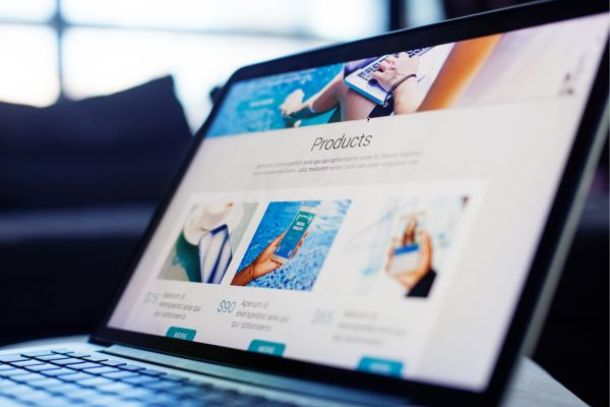User Experience (UX) Design: Best Practices and Tools
User Experience (UX) Design: Best Practices and Tools
User Experience (UX) design is a critical aspect of creating successful digital products and services. It focuses on enhancing user satisfaction by improving the usability, accessibility, and overall delight experienced during interaction with a product. In this article, we will explore the best practices and tools that can help designers create exceptional user experiences.
Conduct User Research
User research is the foundation of effective UX design. It involves understanding the needs, goals, and behaviors of your target users. Conduct interviews, surveys, and usability tests to gather insights about your users’ preferences and pain points. Use this research to inform your design decisions and ensure that your product meets the needs of your intended audience.
Define User Personas
User personas are fictional representations of your target users. They help you empathize with your users and make design decisions based on their needs and goals. Create user personas by consolidating the findings from your user research. Consider factors such as demographics, motivations, and behaviors to develop a comprehensive understanding of your target audience.
Apply User-Centered Design Principles
User-centered design (UCD) is an approach that prioritizes the needs and preferences of users throughout the design process. Incorporate UCD principles, such as involving users in the design process, iterating based on feedback, and conducting usability tests, to create products that are intuitive and user-friendly.
Design for Accessibility
Accessibility is a fundamental aspect of UX design. Consider the needs of users with disabilities and ensure that your product is inclusive and usable for everyone. Follow accessibility guidelines, such as the Web Content Accessibility Guidelines (WCAG), to make your design accessible to individuals with visual, hearing, cognitive, or motor impairments.
Create Intuitive Information Architecture
Information architecture refers to the organization and structure of content within a product. Design a clear and intuitive information architecture by categorizing and labeling information in a way that aligns with users’ mental models. Use techniques such as card sorting and user flow diagrams to visualize and refine your information architecture.
Use Prototyping Tools
Prototyping tools allow designers to create interactive and clickable prototypes of their designs. These tools enable stakeholders and users to experience the product’s flow and interactions before development. Popular prototyping tools include Adobe XD, Sketch, Figma, and InVision. Utilize these tools to validate design concepts, gather feedback, and iterate on your designs efficiently.
Conduct Usability Testing
Usability testing involves observing users as they interact with your product to identify usability issues and gather feedback. Create test scenarios and observe how users navigate through your design. Use tools like UsabilityHub or UserTesting to conduct remote usability tests or consider in-person testing for more detailed insights. Incorporate the findings from usability testing to refine your design and improve the overall user experience.
Implement Responsive Design
In today’s multi-device landscape, it’s crucial to design products that work seamlessly across different screen sizes and resolutions. Implement responsive design techniques to ensure that your product adapts to various devices, including desktops, tablets, and mobile phones. Test your design on different devices to ensure a consistent and optimal user experience.
Pay Attention to Visual Hierarchy
Visual hierarchy involves organizing elements on a screen to guide users’ attention and create a clear understanding of the content’s importance. Use techniques such as typography, color, and spacing to establish a hierarchy of information. Ensure that important elements are prominent and easily distinguishable, while secondary elements are appropriately placed to avoid visual clutter.
Incorporate User Feedback Loops
Continuously gather and incorporate user feedback throughout the design process. Conduct surveys, interviews, or feedback sessions to understand user perceptions and uncover areas for improvement. Actively listen to your users, prioritize their needs, and iterate on your design based on their feedback. User feedback loops allow you to create a product that addresses users’ pain points and aligns with their expectations.
Utilize User Journey Mapping
User journey mapping is a technique used to visualize and understand users’ interactions with a product or service. Map out the different touchpoints and emotions users experience throughout their journey. This technique helps identify pain points, areas for improvement, and opportunities to enhance the user experience. User journey mapping allows you to design a holistic experience that caters to users’ needs at each stage of their interaction with your product.
Stay Updated with UX Trends
UX design is an ever-evolving field, with new trends and technologies emerging regularly. Stay updated with the latest UX trends, industry best practices, and technological advancements. Follow influential UX blogs, attend conferences, and participate in design communities to learn from industry experts and gain inspiration for your designs.
Apply Cognitive Psychology Principles
Understanding how the human mind processes information can greatly inform UX design decisions. Apply cognitive psychology principles to create designs that align with users’ mental models and minimize cognitive load. Consider factors such as visual perception, attention, memory, and decision-making when designing user interfaces. By aligning your design with how users naturally think and process information, you can create intuitive and user-friendly experiences.
Implement Microinteractions
Microinteractions are small, subtle animations or design elements that provide feedback and enhance user engagement. They can be as simple as a button changing color when clicked or a loading animation during a process. Microinteractions add a touch of delight and make the user experience more engaging and satisfying. Implementing well-crafted microinteractions can create a sense of responsiveness and make users feel more connected to your product.
Conduct A/B Testing
A/B testing involves comparing two or more design variations to determine which performs better in terms of user engagement, conversion rates, or other key metrics. Use A/B testing tools such as Optimizely or Google Optimize to test different design elements, layouts, or messaging. By systematically testing and analyzing the results, you can make data-driven design decisions and optimize your design for better user experiences.
Focus on Performance Optimization
Slow-loading websites or apps can lead to frustration and user abandonment. Therefore, prioritize performance optimization in your UX design process. Optimize image sizes, minimize HTTP requests, and leverage caching techniques to improve loading times. Conduct performance testing to identify and address any bottlenecks or areas for improvement. A fast and responsive product contributes to a positive user experience and encourages users to stay engaged.
Embrace Minimalism and Simplicity
Simplicity and minimalism are key principles in UX design. Strive for clean and clutter-free interfaces that make it easy for users to understand and interact with your product. Use white space effectively to create visual breathing room and highlight important elements. Streamline navigation and eliminate unnecessary steps to simplify the user journey. By embracing minimalism, you create a visually pleasing and intuitive experience for users.
Personalize the User Experience
Personalization can significantly enhance the user experience by tailoring content, recommendations, and interactions to individual users’ preferences. Collect user data, such as browsing behavior or past interactions, to deliver personalized experiences. Leverage machine learning algorithms and user segmentation to provide relevant content and recommendations. Personalization makes users feel valued and understood, leading to increased engagement and loyalty.
Seek Continuous User Feedback
User feedback is invaluable for improving the user experience. Implement feedback mechanisms, such as feedback forms, surveys, or user ratings, to gather insights from your users. Encourage users to provide feedback and actively listen to their suggestions and concerns. Regularly analyze and act upon the feedback received to make iterative improvements to your design. By involving users in the design process and incorporating their feedback, you create a user-centered experience that meets their evolving needs.
Iterate and Evolve
UX design is an iterative process. Continuously iterate on your design based on user feedback, data insights, and emerging trends. Embrace an agile approach that allows you to make incremental improvements over time. Regularly evaluate the effectiveness of your design, conduct usability tests, and monitor key metrics. By embracing an iterative mindset, you can create a design that evolves, adapts, and remains relevant in a dynamic digital landscape.
Foster Collaboration Across Disciplines
Effective UX design requires collaboration across disciplines. Work closely with developers, marketers, content creators, and other stakeholders to ensure a cohesive and integrated approach. Collaborative ideation sessions, design sprints, and cross-functional meetings can help align everyone’s perspectives and expertise. By fostering collaboration, you can leverage diverse skills and insights to create a holistic user experience.
Conclusion
User Experience (UX) design is crucial for creating products that engage and delight users. By applying user research, user-centered design principles, and accessibility considerations, designers can create intuitive and inclusive experiences. Utilize prototyping tools, conduct usability testing, and optimize for performance to ensure a seamless user experience. Implement microinteractions, personalize the experience, and seek continuous user feedback to enhance engagement and satisfaction. Embrace simplicity and minimalism, and stay updated with UX trends. By following these best practices, designers can create remarkable user experiences that leave a lasting impression on their audience.


